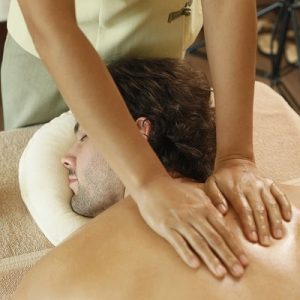Massage Therapy
 Massage Therapy is just one method from a wide array of other very effective and closely related alternative health modalities such as Acupressure, Body Work, Manipulative Therapy, Manual Lymphatic Drainage, Structural Integration, Alternative Medical Systems, Mind-Body Intervention, Biologically Based Therapy, Energy Therapy, Shiatsu and Tui Na. All of these as a group come under the wide umbrella of alternative medicine and body-based methods.
Massage Therapy is just one method from a wide array of other very effective and closely related alternative health modalities such as Acupressure, Body Work, Manipulative Therapy, Manual Lymphatic Drainage, Structural Integration, Alternative Medical Systems, Mind-Body Intervention, Biologically Based Therapy, Energy Therapy, Shiatsu and Tui Na. All of these as a group come under the wide umbrella of alternative medicine and body-based methods.
Massage Therapy is a procedure in which various methods are utilized to manipulate soft tissues of the subject’s body such as the muscles, tendons, ligaments, skin, joints, connective tissues as well as the lymphatic vessels and organs of the gastrointestinal system.
The primary goal of Massage Therapy is to affect physical, psychological and functional curative changes by performing manipulative functions which involve moving or stationery pressure, structured or unstructured force to strategic points, vibration, stroking, kneading, and so on. Continue reading
 In an attempt to understand how and why massage therapy is as effective as it seems to be, scientists and medical researchers from around the world have been studying it for decades.
In an attempt to understand how and why massage therapy is as effective as it seems to be, scientists and medical researchers from around the world have been studying it for decades.
Some characteristics of massage therapy have been conclusively resolved with apparent consensus among the learned scholars, while other characteristics remain as inexplicably mysterious as ever.
For instance, they all agree that when a certain amount of pressure is applied to a soft tissue such as a muscle, some changes occur within the affected muscles.
They also all tend to agree that massage therapy promotes relaxation and reduces the stress which often leads to deterioration or worsening of certain physiological conditions.
Those characteristics of massage therapy which have not yet been explained by conventional science, gave rise to a number of theories and postulates. You will note that they are all prefaced with the word “might” to indicate uncertainty as they described possible health benefits of massage therapy: Continue reading






